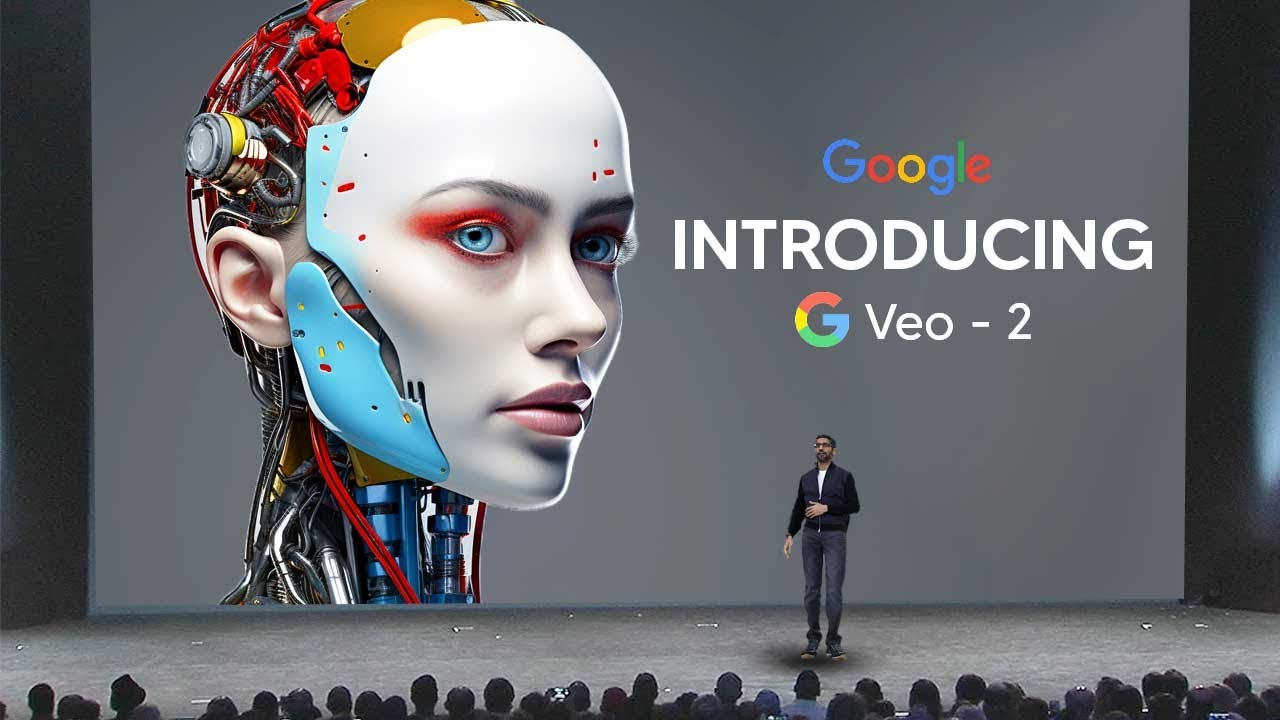In 2025, AI-driven video generation tools have made remarkable strides, with Google Veo 2 emerging as one of the most exciting advancements in the field. As the demand for high-quality, realistic video content continues to grow, technologies like Google Veo 2 promise to revolutionize video production by providing unparalleled realism, high customization, and easy accessibility for content creators, marketers, and even educators. This article will dive into the top features of Google Veo 2, the current limitations of the tool, and explore some of the best alternatives available today.
What is Google Veo 2?
Google Veo 2 is an advanced AI model developed by Google that specializes in generating highly realistic video content. Unlike traditional video editing tools, Google Veo 2 leverages sophisticated machine learning algorithms to create videos with lifelike motion, accurate physics, and smooth transitions. Although the tool is still in the waitlist phase and is only accessible through Google Labs, the excitement surrounding its potential is palpable. With features like enhanced realism, high-resolution output, and advanced customization, Google Veo 2 is poised to change how videos are created, optimized, and shared across various platforms.
Top Features of Google Veo 2
Google Veo 2 offers a range of impressive features that make it stand out in the crowded landscape of AI video generation tools. Let’s take a closer look at some of the most notable features:
1. Realistic Video Generation
One of the most remarkable features of Google Veo 2 is its ability to generate highly realistic videos. Traditional video generation tools often rely on basic animation or preset templates, which can lack the dynamism of real-world motion. Google Veo 2, on the other hand, excels at mimicking the complexities of the real world by integrating advanced physics and motion dynamics into the video creation process.
Whether you’re creating an animated character moving across a virtual environment or generating a realistic scene of objects interacting with each other, Veo 2 ensures that the movement is smooth and natural. The model understands how forces like gravity, friction, and momentum impact the behavior of objects and individuals within a scene, producing highly lifelike results. This realism is particularly important in applications like simulations, virtual reality (VR), and augmented reality (AR), where immersion is key.
2. Advanced Customization and Control
Veo 2 gives users granular control over the video creation process. Unlike many AI video generation models, which offer limited customization options, Google Veo 2 allows users to input detailed instructions and fine-tune various elements of the video. This includes things like camera angles, lens types, lighting setups, and even special effects.
For example, a filmmaker could specify a particular camera angle for an action sequence, adjust the lighting to create dramatic shadows, or choose a lens type to achieve a particular aesthetic (e.g., a wide-angle lens for a grand scene). The flexibility of these customizations means that users can have a great deal of control over the final look and feel of the video, without sacrificing quality.
3. High-Resolution Support (4K)
Another major selling point of Google Veo 2 is its support for high-resolution video generation. The tool can create videos in up to 4K resolution, making it suitable for professional-grade content. High resolution is crucial for content creators who want to produce videos that look crisp and clear on large screens or require fine detail for specific applications like product showcases, cinematic productions, or educational content.
Although the model’s current testing is limited to 720p output, the ability to eventually generate 4K videos ensures that users will be able to create high-quality content that meets the demands of modern video platforms and production studios. As the tool progresses, it’s expected that more users will gain access to these higher-resolution capabilities.
4. Enhanced Realism with Real-World Physics
In addition to lifelike motion, Google Veo 2’s integration of real-world physics adds another layer of realism to generated videos. By accurately simulating the laws of physics, Veo 2 ensures that objects and characters within the video move and interact in a way that aligns with how things work in the real world.
For example, if a car crashes into a wall, the model will simulate the impact accurately, factoring in the speed, mass, and angle of the collision to generate the proper motion, sound, and even potential damage. This kind of realism is particularly valuable for industries like gaming, virtual simulations, and even advertising, where realistic product demonstrations can make a huge impact on viewer engagement.
5. AI-Powered Scene Composition
Google Veo 2 also features AI-driven scene composition capabilities. Users can input basic parameters, such as the type of scene they wish to create, and the AI will automatically generate the layout, positioning, and interaction of objects within that scene. This not only speeds up the video creation process but also helps users achieve more polished results, even if they lack advanced video production expertise.
For example, a marketing team looking to create a product demo video could specify that they need a kitchen setting. Veo 2 would then generate a realistic kitchen scene, arrange the objects in a way that makes the product stand out, and ensure that the lighting complements the product’s features—all without requiring the user to manually adjust every detail.
Limitations of Google Veo 2
Despite its groundbreaking features, Google Veo 2 is not without its limitations. Since it is currently in the testing phase, users can only access it through the Google Labs waitlist, which limits its immediate availability. Furthermore, while it supports 4K video generation, this feature has not yet been fully rolled out, and users are limited to generating videos at 720p resolution for now.
Another challenge is that, like any AI tool, Google Veo 2 may face occasional issues with edge cases or complex instructions. While the AI excels in generating realistic scenarios, there may still be some inconsistencies when handling highly specific or unusual requests.
Alternatives to Google Veo 2 in 2025
While Google Veo 2 is an exciting new tool, its limited accessibility and the ongoing waitlist may make it impractical for many users at this point. Fortunately, there are several alternatives that offer robust AI-driven video generation and editing features. Let’s take a look at some of the top contenders:
1. Pictory
Pictory is an AI-powered platform that allows users to create engaging video content from text and images. It’s ideal for marketers, educators, and social media managers who need to quickly turn written content into visually compelling videos. The platform offers customizable templates, text-to-speech functionality, and an extensive library of stock footage, making it easy to create professional-quality videos in minutes.
While Pictory doesn’t offer the same level of realism as Google Veo 2, it’s a great tool for creating explainer videos, marketing content, and educational resources. Its simplicity and ease of use make it accessible for beginners and small businesses.
2. Synthesia
Synthesia is another leading AI video generation tool that specializes in creating realistic AI avatars. With Synthesia, users can create human-like avatars that speak in a variety of languages. The platform is perfect for creating presentations, explainer videos, or training videos that require an AI-powered presenter.
Synthesia excels in generating realistic, human-like avatars, making it an excellent choice for businesses looking to create professional videos without hiring actors or voiceover artists. The customization options allow for personalization of the avatars, ensuring that they fit the brand or specific message you want to convey.
3. InVideo
InVideo is a versatile and user-friendly video creation platform that includes AI-powered features to simplify the editing process. The platform offers a wide range of templates, stock footage, and customizable elements, making it ideal for marketers and businesses looking to produce professional-looking videos quickly. Whether you’re working on promotional content, social media posts, or educational materials, InVideo’s AI tools can help automate much of the video creation process, saving time and effort.
While InVideo doesn’t offer the same level of deep customization as Google Veo 2, its simplicity and wide range of templates make it a great choice for those who need to create videos on the fly without much technical know-how.
4. Wondershare Filmora
Wondershare Filmora is a comprehensive video editing software that includes AI-driven features like background removal, noise reduction, motion tracking, and automated video effects. It’s an excellent option for users who want more control over the editing process but still want the power of AI to enhance their workflow.
Filmora’s AI features make it easier to edit complex scenes, track objects, and automate repetitive tasks, while still allowing for detailed customization. It’s a great choice for video editors who need a professional tool that combines AI automation with traditional editing power.
Which AI Video Generation Tool Is Right for You?
Choosing the right AI video generation tool depends on your specific needs. If you’re looking for cutting-edge realism and a high level of customization, Google Veo 2 is the tool to watch—though its current limited availability might be a barrier. For those seeking a more accessible, user-friendly platform, tools like Pictory and InVideo offer excellent value with easy-to-use features and templates. If realistic avatars are essential for your project, Synthesia might be your best bet.
For professional video editing with AI enhancements, Wondershare Filmora provides a solid middle ground, offering a full suite of editing tools alongside AI features.
Conclusion
Google Veo 2 is an incredibly powerful tool that represents the future of AI-driven video generation. With its realistic motion, advanced customization, and high-resolution output, it offers a glimpse into what video creation could look like in the coming years. However, as the tool is still in the waitlist phase, users may need to explore alternatives like Pictory, Synthesia, InVideo, or Wondershare Filmora for their current video creation needs. These alternatives offer a range of features suited for different industries, making it easy to find the right solution for your specific video production goals.


Leave a Reply